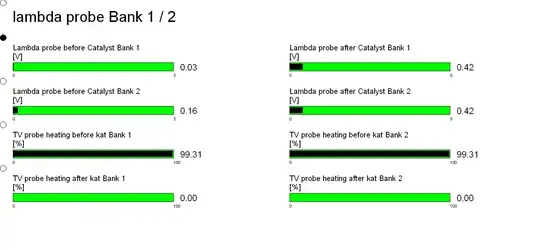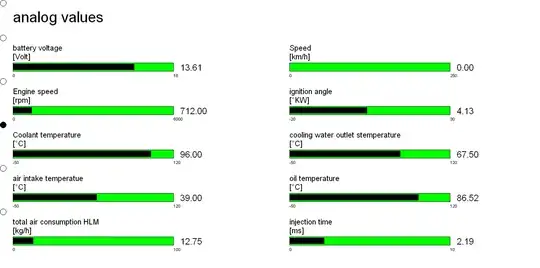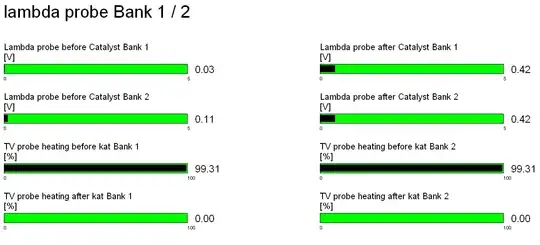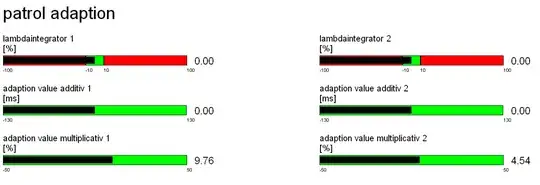On my 2002 BMW E46 330Ci, I've been getting error codes 202 Lambda regulating limit Bank1 and 203 Lambda regulating limit Bank2. Here's the angry sensor readings from the INPA software:
I understand a number of things could be going wrong here, but tonight's discovery has been that the actual readings on the post-cat lambda probes are sitting unchanged at 0.42 whilst the engine runs and I rev the engine. Conversely, the probes pre-cat are varying substantially:
These were taken whilst the car's engine was warm, but not right after or during a substantial drive.
If necessary, I can post a video of the readings, but that's the gist of it - pre-cat O2 sensors are fluctuating substantially whilst post-cat sensors aren't at all. It's interesting that they're both sitting dead at 0.42.
Does that mean my post-cat sensors have failed and need replacing? Or is this some incredibly accurate tuning by the geniuses at BMW!
Hot idle readings
I just took my car for a quick drive to get the engine temperature up to the operating level, and have the following readings via INPA software:
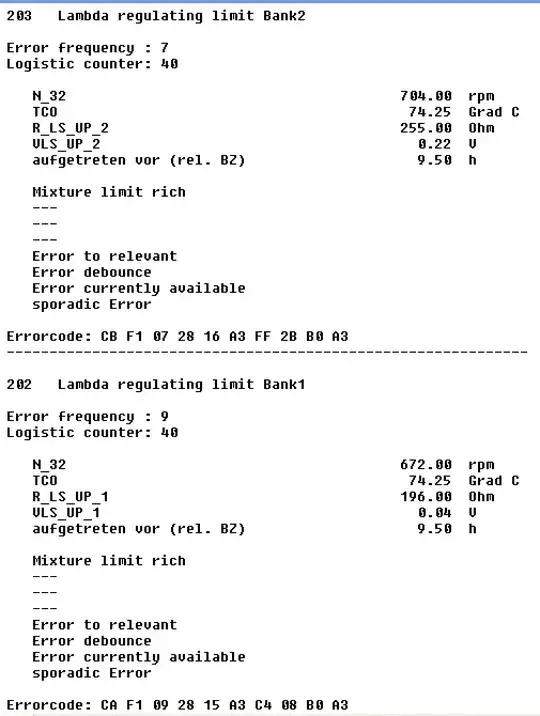 Did not clear errors prior to drive/readings
Did not clear errors prior to drive/readings
Interestingly, the lambdaintegrator readings are now within the expected ranges with flat zeroes.
I've taken screenshots of the rest (digital, throttle, VANOS, roughness etc) but I don't think they'll be helpful so haven't included them so far. If the above readings are also still too much, please advise, though I think they should all be useful.

